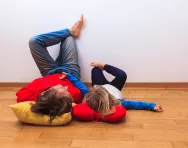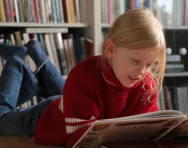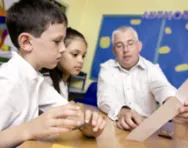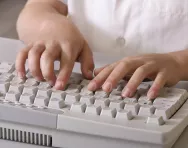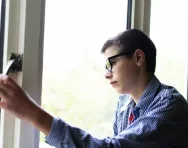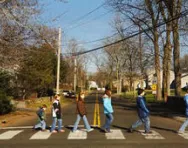Important update from TheSchoolRun
For the past 13 years, TheSchoolRun has been run by a small team of mums working from home, dedicated to providing quality educational resources to primary school parents. Unfortunately, rising supplier costs and falling revenue have made it impossible for us to continue operating, and we’ve had to make the difficult decision to close. The good news: We’ve arranged for another educational provider to take over many of our resources. These will be hosted on a new portal, where the content will be updated and expanded to support your child’s learning.
What this means for subscribers:
- Your subscription is still active, and for now, you can keep using the website as normal — just log in with your usual details to access all our articles and resources*.
- In a few months, all resources will move to the new portal. You’ll continue to have access there until your subscription ends. We’ll send you full details nearer the time.
- As a thank you for your support, we’ll also be sending you 16 primary school eBooks (worth £108.84) to download and keep.
A few changes to be aware of:
- The Learning Journey weekly email has ended, but your child’s plan will still be updated on your dashboard each Monday. Just log in to see the recommended worksheets.
- The 11+ weekly emails have now ended. We sent you all the remaining emails in the series at the end of March — please check your inbox (and spam folder) if you haven’t seen them. You can also follow the full programme here: 11+ Learning Journey.
If you have any questions, please contact us at [email protected]. Thank you for being part of our journey it’s been a privilege to support your family’s learning.
*If you need to reset your password, it will still work as usual. Please check your spam folder if the reset email doesn’t appear in your inbox.
Lockdown procedures in primary schools
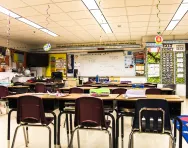
Lockdown has had a very different meaning since March 2020, but this information aims to explain other types of lockdown, unrelated to the covid pandemic.
What is lockdown in primary schools?
Barely a day goes by at the moment without a terror-related story hitting the headlines.
And in this unstable climate, many of us worry about whether our children are safe at school.
In July 2017, teaching union the NASUWT called for all schools to have a concrete protocol to be used in the event of a dangerous event happening on or near the premises, and in practice, more and more schools are adopting a ‘lockdown plan’.
What is a lockdown procedure?
Although most people use the term ‘lockdown’ to refer to getting everyone into a safe place and sealing the exits, it’s actually one element of a wider practice known as ‘invacuation’.
‘Invacuation is the process of getting everybody inside and safe, and securing the building,’ explains Adam Varley, occupational safety adviser at City of Bradford District Council.
In most cases, pupils will be able to stay in their classroom during an invacuation, and the school day can continue as normal, just with everyone staying indoors.
Lockdown goes a step further, in that everyone on the premises – staff, pupils and visitors – are moved away from the potential danger to a place where they can’t be seen from outside the building.
‘Lockdown would only be used in more extreme circumstances where there is a serious and current threat to the safety of those in the building,’ Adam explains.
When might invacuation or lockdown be necessary?
Most of us automatically picture terror incidents or unprompted attacks when we think about lockdown.
It’s true that this sort of incident would necessitate invacuation or lockdown, but there are other situations in which it might also be implemented.
Invacuation might be required if:
- There is local air pollution due to a nearby fire or chemical release.
- There is a dangerous animal (usually a dog) in the grounds.
- There is an incident or civil disturbance in the area that might affect the school.
Lockdown might be implemented if:
- There is an aggrieved, disturbed or intoxicated person trying to gain access to the school (this could be a parent or a stranger).
- There is an intruder on the site.
- There is an internal threat from a student.
‘Invacuation or lockdown could be triggered if there is an urgent imminent threat, or as a precaution because of a threat in the vicinity,’ says Adam.
Do schools have to have an invacuation/lockdown procedure?
At the moment, the Department for Education doesn’t compel schools to have an invacuation and lockdown plan.
‘However, legislation does require schools to take appropriate measures to keep users of the site safe,’ Adam explains.
In practice, it’s up to schools to decide whether they need an invacuation/lockdown policy. The complexity of the plan will depend on the school’s perception of risk: for instance, inner city schools and faith schools may feel more under threat than a small rural school.
What happens during invacuation?
In most schools, an invacuation will take the following shape:
1. A clear signal should be given that pupils, staff and visitors can identify as an invacuation signal.
2. If pupils are outside, staff should immediately take them to the nearest safe area inside the building.
3. All external doors and windows should be shut and locked as necessary.
4. The register is taken to ensure all children are accounted for.
5. The staff member in charge of taking the register must notify the office if any children are unaccounted for.
6. Everyone should remain where they are until the all-clear is given.
What happens during a lockdown?
Schools should identify suitable lockdown areas to be used in serious incidents. A lockdown area should be large enough to accommodate the likely number of people who would need to use it.
Ideally, a lockdown area should also:
- Have a separate means of escape.
- Have no windows or doors directly to the outside.
- Have a lockable door.
The steps taken will be the same as during an invacuation, but there should be an additional signal that lets people know the school is in lockdown.
The doors and windows must be shut and locked, and blinds or curtains should be drawn. Depending on the nature of the threat, children may be told to hide under their tables.
Schools should identify a staff member who will be responsible for supervising each lockdown area.
Practising invacuation and lockdown
Schools should practise invacuation procedures with pupils, in the same way that they hold fire drills.
It’s natural to worry that your child will be unduly alarmed by practising invacuation, but schools take care not to frighten pupils.
Talking to the BBC about lockdown drills, Ian Darlington, a teacher at Reinwood School in Huddersfield, said: ‘It almost becomes second nature. Initially it might appear that we are raising concerns, but in actual fact [pupils] are quite calm doing it now.’
‘It doesn’t have to be a full lockdown rehearsal; it could just be an invacuation drill initially, getting everybody safe and secure in the building,’ adds Adam.
How can you find out if your child’s school has an invacuation/lockdown policy?
Your child’s school should be happy to tell you if they have a policy in place. Ideally, you’ll be informed of the details in a letter to parents or on the school website.
‘We advise that schools inform parents and pupils before lockdown drills to increase understanding and reduce the potential for undue alarm,’ Adam says.
What should you do in the event of a genuine invacuation or lockdown?
Try not to panic if you hear that an incident is taking place at your child’s school.
Generally, the advice given to parents is:
- Don’t contact the school as this could tie up the phone lines and interfere with calling the emergency services.
- Don’t go to the school in person, as you might get in the way of the emergency services and even put yourself in danger.
- Wait for the school to contact you about when it’s safe to collect your child, and where from.
